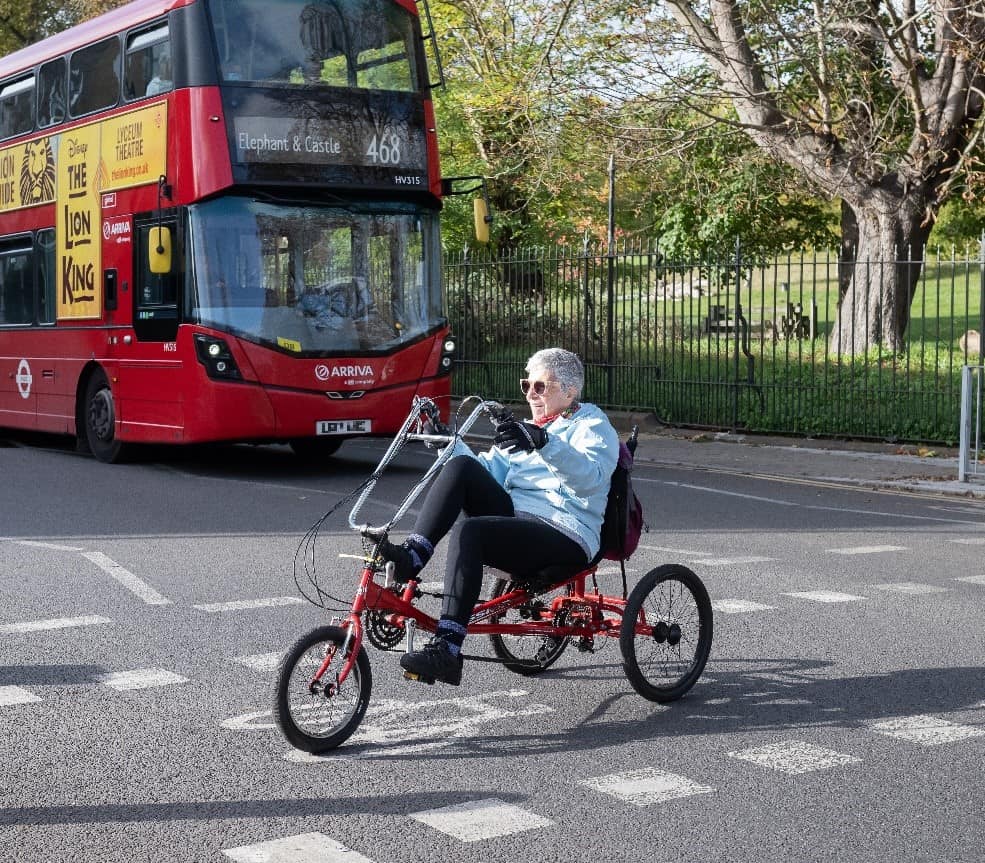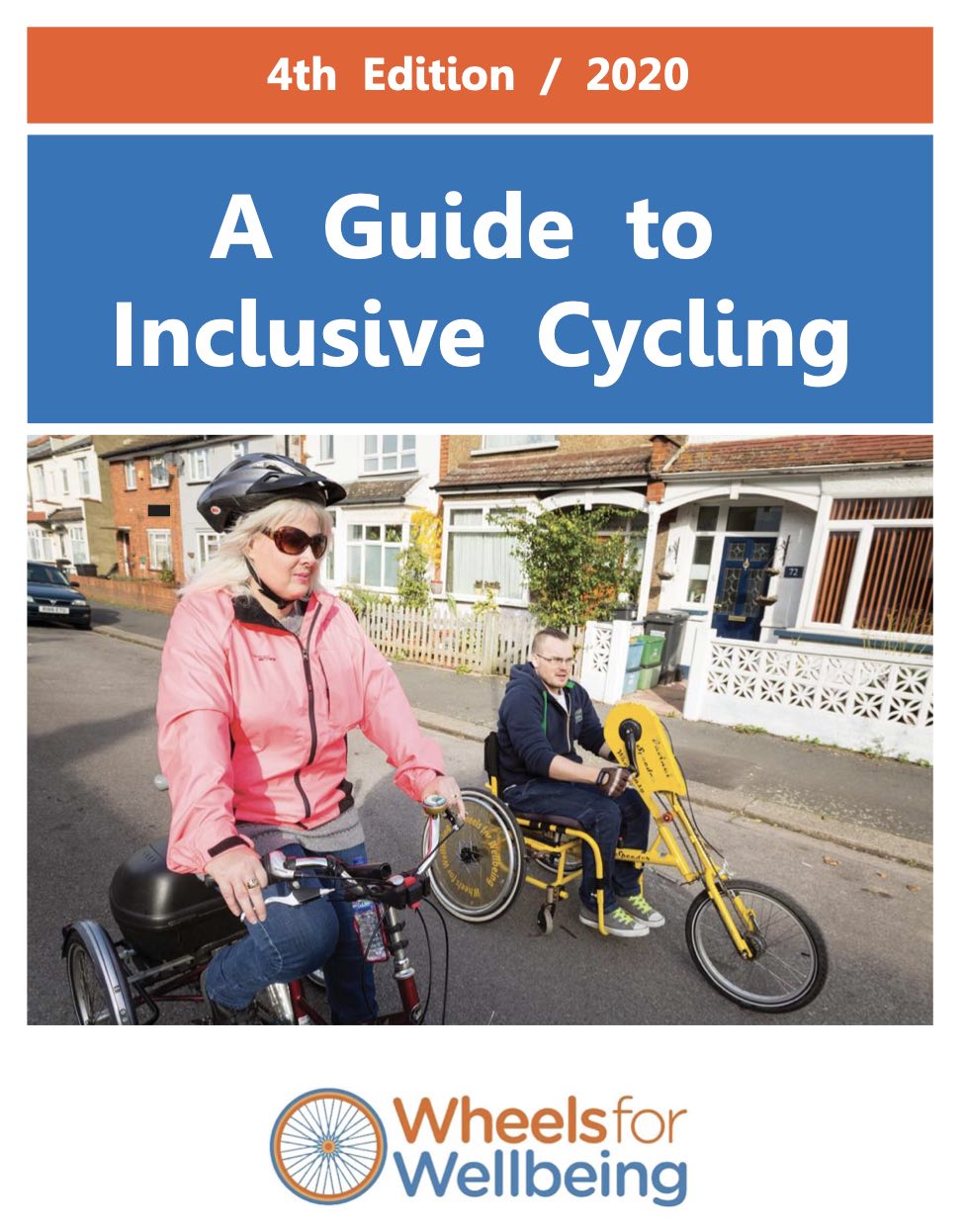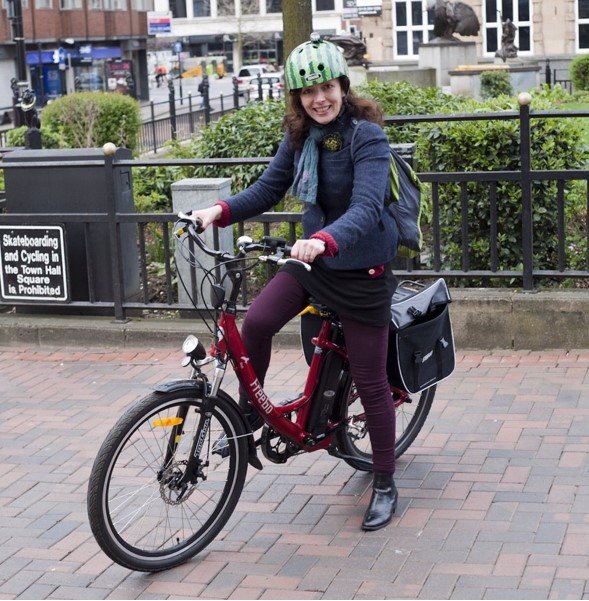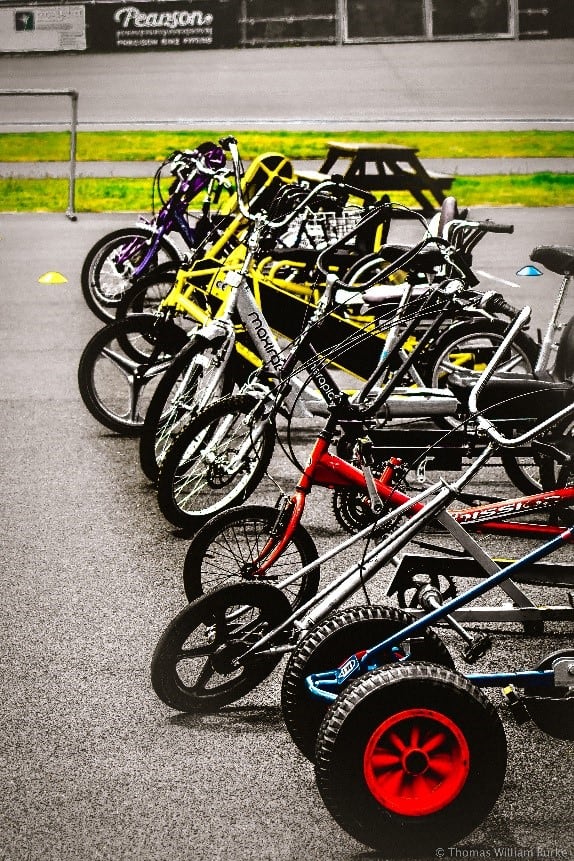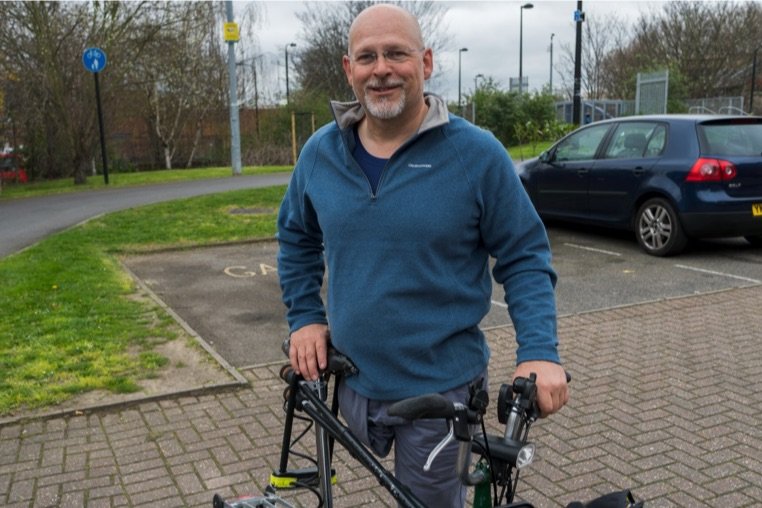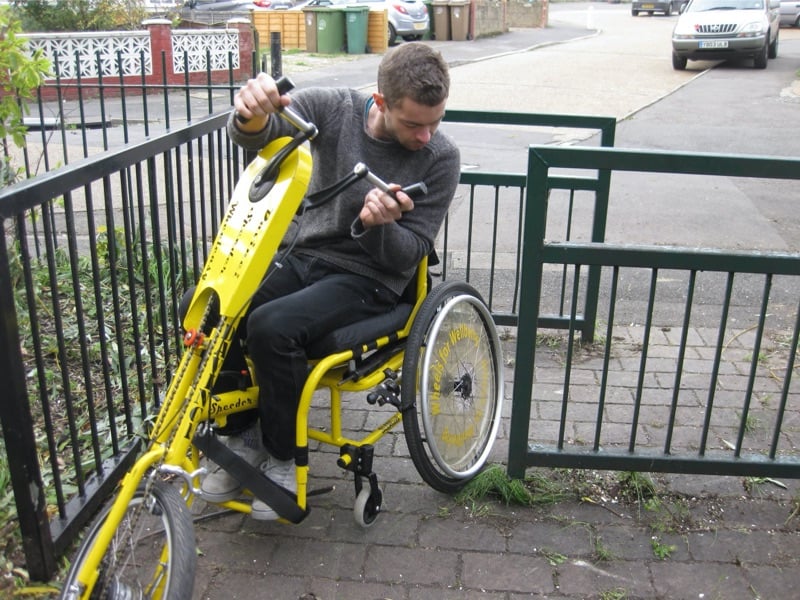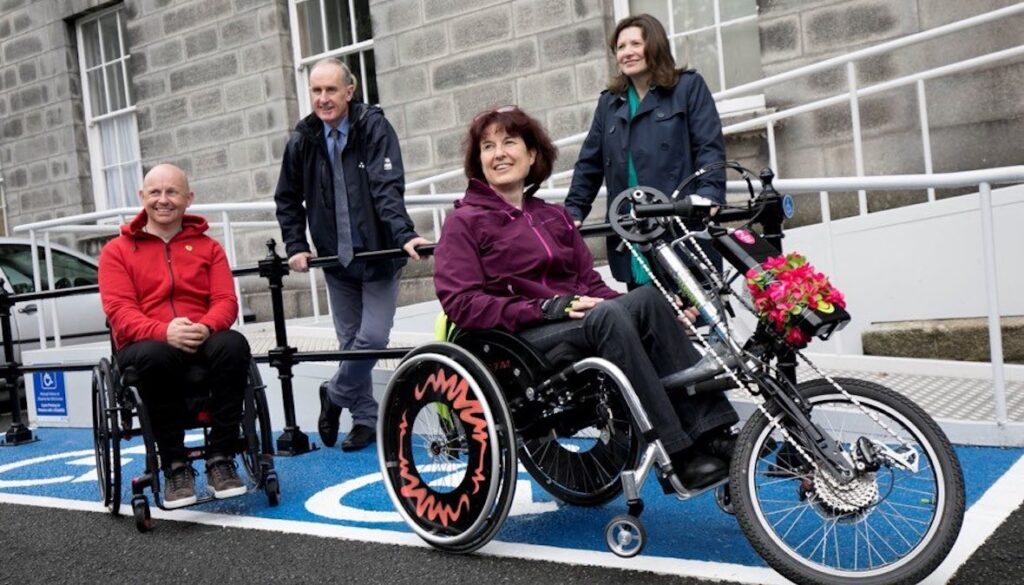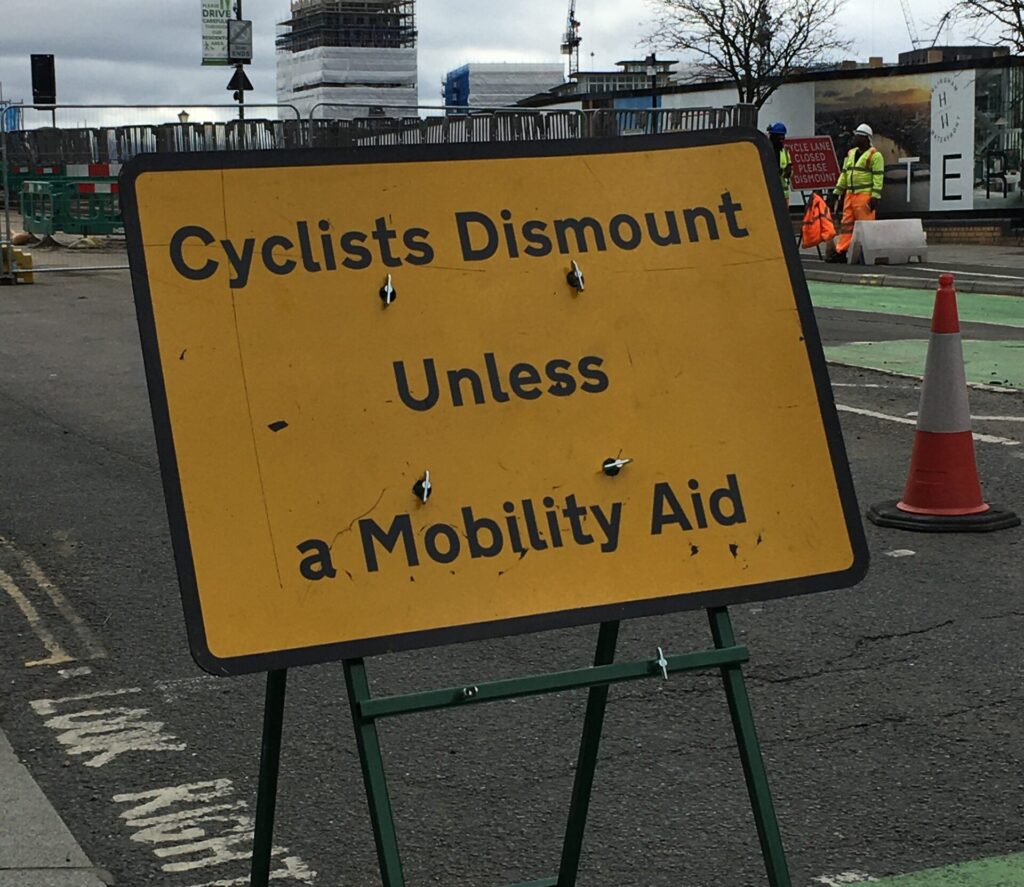Guide to Inclusive Cycling 5th Edition – coming soon
We’re excited to announce the 5th Edition of the Wheels for Wellbeing Guide to Inclusive Cycling for Summer 2025.
There’s been huge progress in national-level consideration of pan-impairment, pan-modal Disabled people’s mobility needs over the past five years.
Our new guide edition aims to support campaigners, policy makers, decision makers and designers to understand the fundamentals of inclusive active travel, so that all Disabled people can have the option to make the walking/wheeling, cycling and multi-modal journeys that we want and need to.
The 5th Edition Guide to Inclusive Cycling will be available to download here soon.
Guide to Inclusive Cycling 4th Edition
Welcome to the 4th edition of The Guide To Inclusive Cycling. The first edition was launched in 2017. To our knowledge, it remains the only comprehensive guide on inclusive cycling anywhere in the world. We are very pleased that this latest edition was prompted by the release in July 2020 of the UK Government’s latest cycling design guidance, which incorporates a number of our recommendations.
Why the Guide?
For too long, Disabled people have been mostly absent from the cycling debate and through this guide and the rest of our campaigns and policy influencing work we have undertaken to change this. Our Guide is the product of years of campaigning to make cycling more inclusive. Its roots can be traced back to a talk we did at a London Cycling Campaign seminar in 2014, where some of its key principles were first developed, and also to the launch of our Beyond the Bicycle manifesto in 2016. With increased awareness and use of our Guide, our aim is to raise the visibility of Disabled cyclists and to put in place the building blocks for a more inclusive cycling culture.
Who and what the Guide is for
The guide does not claim to be the answer to everything about inclusive cycling. Nor is it a highly technical set of design guidelines. Rather, it is somewhere in between: an accessible but thorough guide on the basic principles of inclusive cycling. We hope that it will be a useful tool for local authorities, transport bodies, civil engineers, academics, cycling organisations, disability charities, campaign groups and, of course, Disabled cyclists themselves.
The guide covers a number of topics. It begins by defining what we mean by ‘inclusive cycling’, providing a context to disability in the UK, dispelling some of the myths around disability and cycling and setting out some key facts and figures. It goes on to look at the benefits of cycling for Disabled people, the types of cycles used by some Disabled people and the barriers faced by Disabled cyclists.
The first section finishes with an outline of our current campaigns and how UK equality legislation applies to inclusive cycling. The rest of the handbook is then broken down into four sections – recognition and awareness; inclusive and integrated cycle networks; inclusive infrastructure; and inclusive facilities – exploring the practical ways in which cycling can be made more inclusive in each of these areas. We finish with some concluding thoughts on what a truly inclusive cycling nation might look like in the future.
We hope that the guide provides some useful signposting for anyone designing cycle infrastructure, updating a cycling strategy or who is keen to better understand the needs of Disabled cyclists. Each section features real life stories from Disabled cyclists, case studies and policy recommendations. Where relevant, we hyperlink the relevant pages of the UK Government’s latest official cycle design guidance throughout the Guide.
We are aware that things move quickly in the policy world, and so it remains our intention that this guide continues to be a ‘live’ online working document that can be continually updated. If you would like to make a contribution or suggestion please email us at info@wheelsforwellbeing.org.uk using ‘Guide to Inclusive Cycling – feedback’ as the subject line.
This document is our latest contribution towards reaching the ultimate goal of cycling equality for Disabled people. We hope you enjoy reading it.
“It’s a great piece of work. I’ve already used it to influence the design and location of cycle parking in a new development.”
“I’m beginning to think Wheels for Wellbeing are probably the most important lobbying group driving the need for inclusive cycle infrastructure in the UK.”

